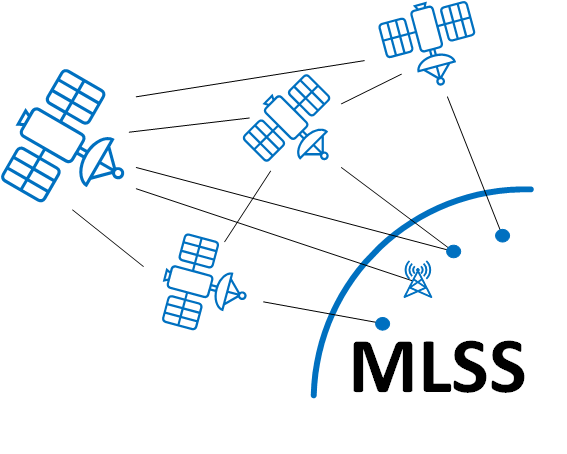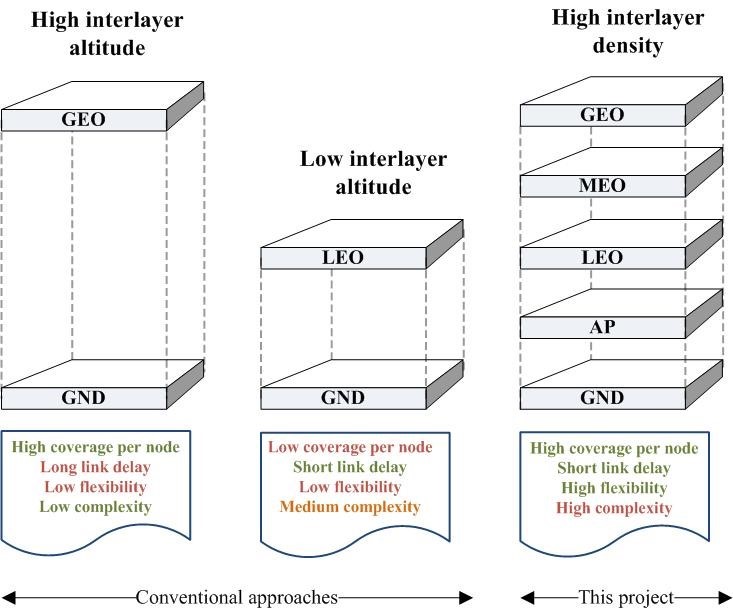
-
StatusOngoing
-
Status date2023-05-08
-
Activity Code1B.131

The main objectives of the study are to:
-
Define use cases and applications for Multi-Layered SatCom Systems
-
Identify the potential benefits and opportunities that can be enabled by such a system and determine the likely market demand
-
Assess the feasibility, performance, benefits and value such a system would bring to relevant markets
-
Provide a balanced argument for or against a Multi-Layered SatCom System by contrasting the concept against alternate models and methodologies that could achieve the same or similar system level results
-
Investigate system architectures and operational concepts of such satellite systems
-
Detail the space, ground, and user segment architectures and identify techniques and technologies required to implement such satellite systems
-
Define the system architecture most suited for the implementation of the identified mission(s), taking into account commercial, regulatory, governance, and security issues.
-
Conduct detailed system wide modelling, simulation, and analysis of the proposed system
-
Provide a deep understanding of the impact on link budgets and service capabilities and expose system level bottlenecks
-
Establish a roadmap to address all technical and non-technical issues and define the key developments necessary to bring to fruition such a system
-
Detail an economic model with ROM estimates of the recurring and non-recurring costs of required developments and assess the proposed systems commercial viability and competitiveness.
The main challenge is to identify the scenarios where a multi-layered SatCom system would be economically feasible and technically beneficial compared to a single-layer system. Furthermore, routing or switching optimization in highly dynamic, time-variant, multi-layered satellite constellation with inter-layer links is challenging. Other challenges include interference management, network management and control, end-to-end protocols, resource management, hardware integration, roaming and mobility between different operators, QoS guarantees, link level issues in e.g. inter-layer links, and regulatory issues.
Compared to a single-layer satellite system, the potential benefits that a multi-layered system can especially provide are ultra-high availability, resilience, and deterministic networking. It will also be more economical to build, e.g., a multi-layered system consisting of GEO and LEO satellites than a single-layer system consisting only of LEO satellites.
The following technology areas were selected for further study to enable practical multi-layered satcom system missions:
-
Spectrum allocation
-
Resource management and routing
-
Handover concepts
-
Intersatellite links
-
Ground systems and user terminals
-
On-board processing and digital payloads.

The project defines the architecture for a system that implements a multi-layered satellite scenario (see figure above) consisting of globally spread, heterogeneous user terminals capable of connecting to multiple available networks with heterogenous QoS requirements including, e.g., ultra-high availability deterministic broadband connections. The user terminals shall be able to communicate with multiple satellites simultaneously or seamlessly switching between satellites. The satellite layers are tightly integrated with joint orchestration and resource management for achieving the needed efficiency.
The work is divided into six technical tasks:
-
Task 1: Market and Technology Assessment
-
Task 2: Scenario Trade Off and Selection
-
Task 3: System Requirements and Trade Off Analysis
-
Task 4: System Definition, Modelling, and Simulation
-
Task 5: Economic and Regulatory Factors Analysis
-
Task 6: Gap Analysis, Value Chain Analysis, Technical and Non-Technical Roadmap
Milestone reviews are after completion of Tasks 1 and 2, Task 3, Task 4, and Tasks 5 and 6.
Tasks 1 and 2 have been completed: markets and technologies have been studied, potential high-level scenarios identified, and one scenario has been selected for further study.





